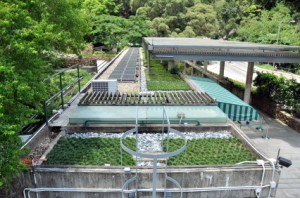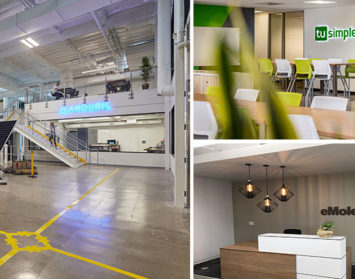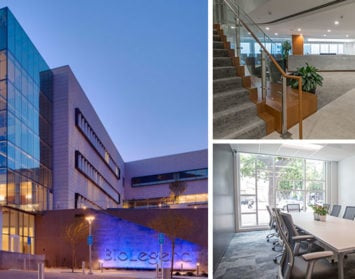If you’ve been involved in a construction project, or are preparing to embark on one, you’ve undoubtedly heard the term LEED tossed around. But what is it and what does it mean to you?
Originally developed in 2000 and overseen by the United States Green Building Council (USGBC), Leadership in Energy and Environmental Design (LEED) is a green building certification system. The benefits of green building include better utilization of resources, healthier spaces and reduced operating and maintenance costs. Projects that undergo the LEED certification process allow for an ‘apples to apples’ comparison to other sustainable building projects.
LEED Rating Systems
 There is a LEED rating system to cover all parts of the building lifecycle. LEED for New Construction, Commercial Interiors and Core & Shell are rating systems that apply to the design and construction process, while Existing Buildings: Operations and Maintenance addresses the long term functional lifecycle of a building. More recently the USGBC has also rolled out rating systems for specialized projects including: Retail, Healthcare, Homes and Neighborhood Development.
There is a LEED rating system to cover all parts of the building lifecycle. LEED for New Construction, Commercial Interiors and Core & Shell are rating systems that apply to the design and construction process, while Existing Buildings: Operations and Maintenance addresses the long term functional lifecycle of a building. More recently the USGBC has also rolled out rating systems for specialized projects including: Retail, Healthcare, Homes and Neighborhood Development.
LEED certification is awarded using a 100 point scale and allows projects to be certified on four levels: Certified, Silver, Gold and Platinum. Points are awarded based upon a given category’s potential positive environmental impact, such as water conservation or reduced energy consumption, and can be achieved in a variety of ways and at a variety of price points.
There are little to no cost credits for choosing a location near mass transit or encouraging employees to carpool in exchange for preferred parking, to more costly credits like outdoor air delivery monitoring which may require additional equipment such as CO2 sensors and HVAC controls to automatically increase the outdoor air delivery. Some credits also allow for an increased number of points if certain percentage requirements are met; for example, in LEED CI rating system you will receive 6 points for a 30% water use reduction, 8 for 35%, and 11 for 40% reduction. There are also bonus points for “regionally specific” credits that address specific environmental concerns related to your geographical area.
LEED Considerations
 The LEED certification process will typically be managed by the architect, contractor or construction manager. An additional management and coordination fee can be expected due to the extensive amount of documentation required for certification. Depending on the project’s complexity and the desired level of certification, an independent LEED consultant may be engaged to assist in point selection as well as the documentation and review process.
The LEED certification process will typically be managed by the architect, contractor or construction manager. An additional management and coordination fee can be expected due to the extensive amount of documentation required for certification. Depending on the project’s complexity and the desired level of certification, an independent LEED consultant may be engaged to assist in point selection as well as the documentation and review process.
Hughes Marino has several LEED accredited professionals on staff that guide our clients through the process. If you are considering incorporating LEED into your project, it should be done as early as possible in order to maximize the achievable credits. A preliminary meeting should be held to review a project’s LEED eligibility as well as identify the targeted points. This preliminary meeting can help identify cost implications as well as help in the site selection process by identifying locations that are more suitable for pursuing LEED.
One major consideration for LEED certification is cost. It is estimated by the USGBC that, on average, LEED certification will add 2% to the project cost, but in our experience, the cost LEED certification has ranged from 2.5-6% of the project cost and sometimes higher. These costs can vary widely based upon the specific credits being attempted. Similarly, the return on investment generated by the reduction in the building’s life cycle cost can vary greatly depending on which green building strategies are utilized.
 However in many cases the less tangible benefits to a company, such as being a good steward of the earth as well as the increased publicity and favorable community relations, far outweigh any additional cost.
However in many cases the less tangible benefits to a company, such as being a good steward of the earth as well as the increased publicity and favorable community relations, far outweigh any additional cost.
The Hughes Marino Construction Management team is made up of LEED-Accredited Professionals and Lean Six Sigma Green Belts and is experienced in green-building technology implementation.
Dean Petersen is senior vice president of Hughes Marino Program, Project and Construction Management, a global corporate real estate advisory firm that exclusively represents tenants and buyers. Contact Dean at 1-844-662-6635 or dean@hughesmarino.com to learn more.








